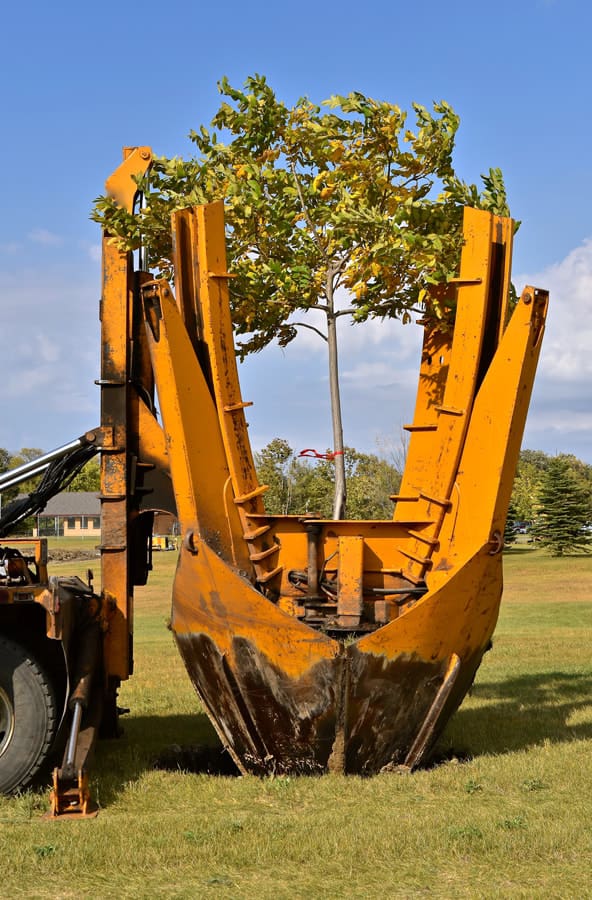Tree Removal
Natural Methods for Pest Control in Trees


As a tree lover, I’ve always wanted to keep these magnificent beings safe from pesky pests. That’s why I’ve delved into the world of natural methods for pest control in trees.
In this article, I’ll share with you my expertise on pruning techniques, beneficial insects, organic repellents, cultural practices, and companion planting.
Together, we’ll create a haven for our trees, where harmony between nature and pests is achieved.
So, let’s embark on this journey and nurture our trees with love and care.
Pruning Techniques for Pest Prevention
Pruning plays a crucial role in preventing pest infestations in trees. By selectively removing dead, damaged, or diseased branches, we create an environment that’s less attractive to pests. Pruning also helps improve air circulation and sunlight penetration, creating conditions that are unfavorable for pests to thrive.
It’s important to prune trees properly, following the guidelines set by experts. This includes making clean cuts just outside the branch collar, avoiding excessive pruning, and timing the pruning to minimize stress on the tree.


Regular inspections and maintenance pruning are essential to keep pests at bay and ensure the health and vitality of trees. As we delve into the next section on beneficial insects for natural pest control, we’ll see how pruning can complement these methods for more sustainable and effective results.
Beneficial Insects for Natural Pest Control
To enhance the natural pest control in trees, I rely on the presence and assistance of beneficial insects. These insects play a crucial role in maintaining the balance of the ecosystem by preying on pests that can cause damage to trees.
Ladybugs, for example, feed on aphids, mites, and scales, which are common pests in trees. Lacewings are another beneficial insect that feed on aphids, caterpillars, and other soft-bodied insects. Additionally, parasitic wasps help control pests like caterpillars and borers by laying their eggs inside the pests, ultimately killing them.
By promoting the presence of these beneficial insects in my trees, I can reduce the need for chemical pesticides and create a healthier, more sustainable environment.
Transitioning into the subsequent section about organic pest repellents for trees, let’s explore additional methods to protect trees from pests.
Organic Pest Repellents for Trees
Continuing from the discussion on beneficial insects, I rely on organic pest repellents to further protect my trees from pests. These repellents aren’t only effective but also safe for the environment and for the health of my trees.
Here are some organic pest repellents that I use:


- Neem oil: Derived from the neem tree, this oil acts as a natural insecticide and repels a wide range of pests.
- Garlic spray: Made from crushed garlic cloves, this spray repels insects and also has antifungal properties.
- Citrus peel spray: Boiling citrus peels in water creates a spray that repels pests like aphids, caterpillars, and ants.
- Soap and water solution: Mixing liquid soap with water creates a solution that suffocates and repels pests.
Cultural Practices to Reduce Pest Infestation
To maintain a healthy and pest-free environment for my trees, I implement cultural practices that help reduce pest infestation. One important practice is proper sanitation, which involves removing fallen leaves, fruits, and other plant debris that can serve as breeding grounds for pests. Regular pruning is also crucial to remove infected or damaged branches, reducing the risk of pest infestation. Additionally, I ensure proper spacing between trees to allow for good air circulation, which helps deter the spread of pests. Furthermore, I practice crop rotation, alternating tree species in different areas to disrupt pest life cycles. These cultural practices not only create a healthier tree environment but also promote biodiversity and resilience against pest outbreaks.
Companion Planting for Pest Management
In implementing cultural practices to reduce pest infestation in my trees, I also employ companion planting as an effective method for pest management. Companion planting involves strategically placing certain plants near each other to enhance their growth and repel pests.
Here are four key companion planting techniques I use:
- Interplanting: I intersperse pest-repellent plants among my trees to deter insects. For example, planting aromatic herbs like basil or rosemary near fruit trees can deter pests.
- Trap Cropping: I grow plants that attract pests away from my trees. For instance, planting marigolds or sunflowers can lure aphids or whiteflies away from valuable crops.
- Beneficial Insects: I attract beneficial insects, such as ladybugs or lacewings, by planting flowers like daisies or yarrow. These beneficial insects prey on pests, keeping their populations in check.
- Nitrogen Fixation: I incorporate nitrogen-fixing plants like clover or beans to enrich the soil around my trees. This improves tree health, making them less susceptible to pests.


Hello there! I’m Logan Foster, the green-thumbed social media marketer behind the vibrant world of 1800TreeGuy.com. With roots firmly planted in arboriculture, I’ve branched out to help clients cultivate their dream outdoor spaces, one leafy canopy at a time. My knack for nurturing nature is more than a profession—it’s a way of life.
When I’m not talking trees and teaching the art of arboreal care, you can find me cheering on the Bulldogs—my alma mater’s pride and my forever team. My environmental studies there didn’t just teach me about ecosystems; they instilled a lifelong passion for protecting our planet.
Off the clock, I’m an adventurer at heart. Whether it’s trekking the Appalachian trails, pedaling down a mountain path, or crafting guides to share the wonders of the wild, I’m happiest with soil under my nails and the sun on my face. And let’s not forget Yoda, my pug sidekick. He may not have mastered the art of stillness, but his joyful grins are my daily dose of happiness.
I’m all about making connections—between people and the great outdoors and between my clients and their ideal landscape visions. My approach is personal; every tree has a story, and every garden reflects its caretaker.
If you want to green your scene or share in my outdoor escapades, give me a shout on Instagram or Facebook. Let’s cultivate a conversation and grow a community rooted in a love for the lush life.







